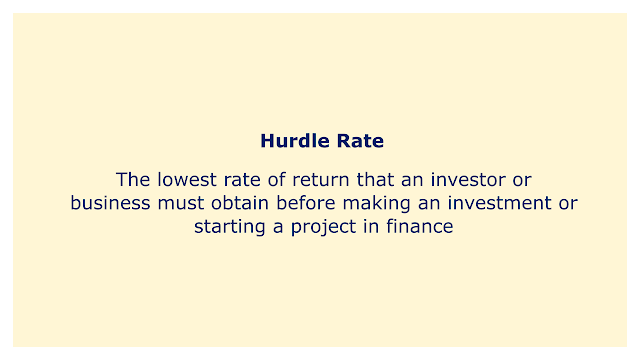 |
| Image: Moneybestpal.com |
A hurdle rate is the lowest rate of return that an investor or business must obtain before making an investment or starting a project in finance. It is also known as the needed rate of return or the minimum acceptable rate of return (MARR) (RRR). The hurdle rate is typically given as a percentage, and it changes depending on how risky the investment is.
In capital budgeting, which involves making choices regarding long-term investments requiring significant capital expenditures, the hurdle rate is a key idea. Companies compute the anticipated cash flows and contrast them with the hurdle rate to assess the viability of a project. The project is viewed as viable and worthwhile to continue if the anticipated cash flows are higher than the hurdle rate.
The hurdle rate takes into account a number of variables, including the cost of capital, inflation, market circumstances, and the amount of risk involved in the investment. The hurdle rate will increase as the level of risk does. A new company, for instance, might need a hurdle rate of 20% or higher, whereas a low-risk investment wouldn't.
A corporation may decide to pursue mergers and acquisitions based on the hurdle rate. The corporation may opt not to move forward with the acquisition if the projected profits from it do not above the hurdle rate.
